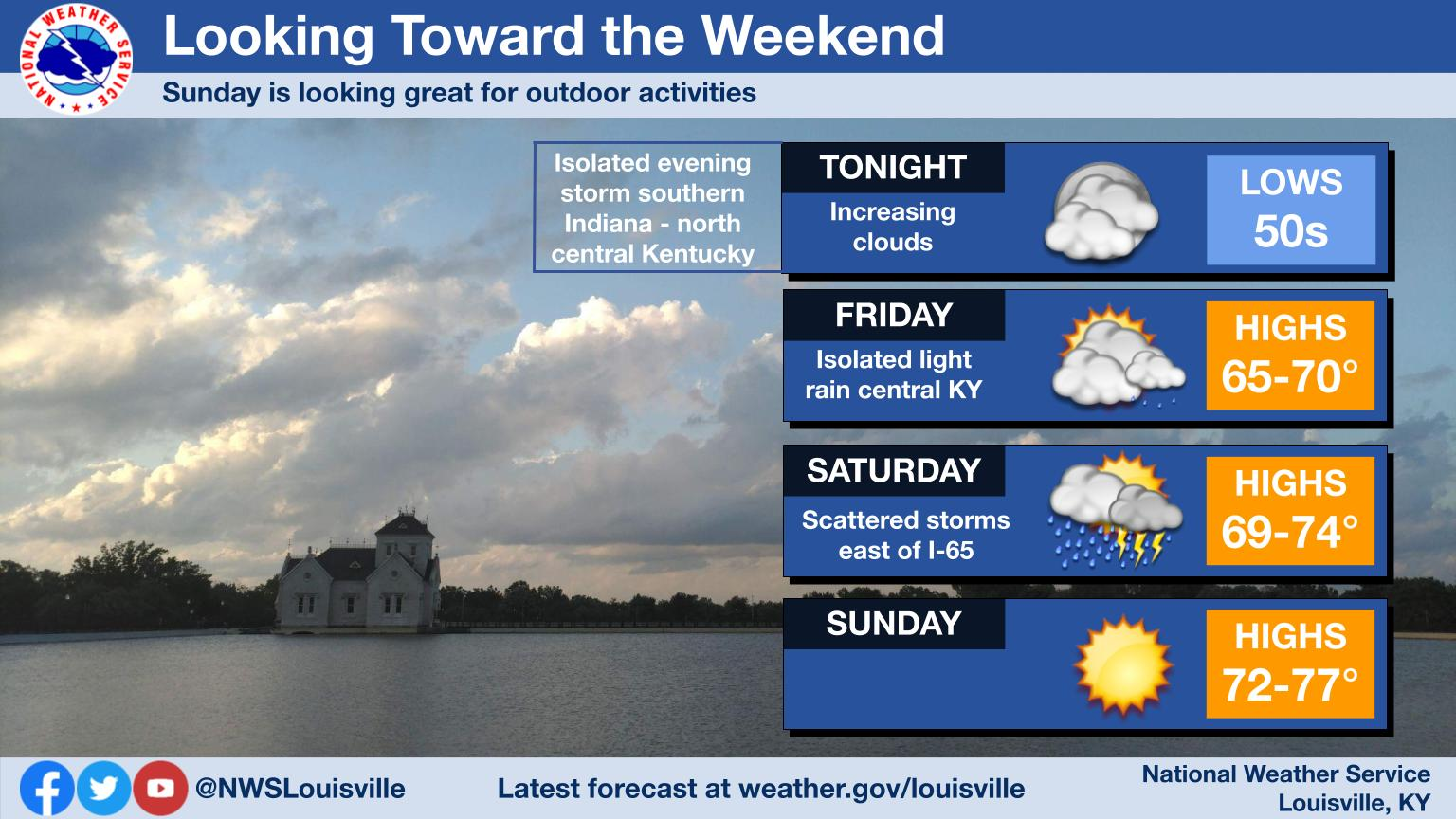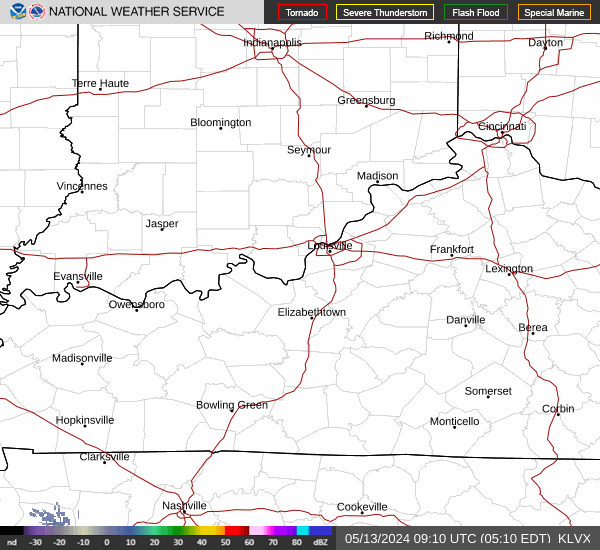Louisville, KY
Weather Forecast Office
.png) |
|
Conventional Doppler radar sends out a horizontal energy pulse providing a one dimensional view of precipitation. Dual pol radar sends both horizontal and vertical pulses, providing a two dimensional view. Thus, it provides much better information about the size, shape, and estimated amount of precipitation, distinguishing between rain, snow, and hail. Basic dual pol products include correlation coefficient (CC), differential reflectivity (ZDR), and specific differential phase (KDP). More information is available on our Dual Pol webpage. Above, a winter weather event is shown with a transition from rain to snow along the white line in each panel. In base reflectivity data (upper left), it is very difficult to tell where it is raining vs. snowing, although snow generally looks smoother and rain a bit more cellular (non-uniform), which is somewhat evident in this panel (although light rain can look uniform too). The corresponding CC data is shown in the upper right panel. Here, highly correlated precipitation entities resulted in high CC values around 0.98-0.99 (dark red/purple) to the left (west) of the white line, where snow was occurring. To the right (south and east) of the line, lower CC values (yellow, orange, red) indicated less correlation, i.e., different size and shaped raindrops. The white line clearly delineated a change in CC, which denoted the location of where rain to the south and east changed to snow to the west. At a different time during the event, reflectivity again showed light and moderate precipitation occurring (lower right). While precipitation looked a bit smoother to the left (west) of the white line, precipitation type was still difficult to determine from reflectivity alone. However, ZDR data (lower right) also showed a distinct demarcation between low values less than 0.5 (dark blue) to the left (west) of the white line from higher values (light blue/yellow) to the right (east) of the line. Low, uniform ZDR values are associated with similar-sized and shaped particles, in this case snow west of the line from that east of the line where rain was falling at this time. |
Current Hazards
Hazardous Weather Outlook
Storm Prediction Center
Submit a Storm Report
Advisory/Warning Criteria
Radar
Fort Knox
Evansville
Fort Campbell
Nashville
Jackson
Wilmington
Latest Forecasts
El Nino and La Nina
Climate Prediction
Central U.S. Weather Stories
1-Stop Winter Forecast
Aviation
Spot Request
Air Quality
Fire Weather
Recreation Forecasts
1-Stop Drought
Event Ready
1-Stop Severe Forecast
Past Weather
Climate Graphs
1-Stop Climate
CoCoRaHS
Local Climate Pages
Tornado History
Past Derby/Oaks/Thunder Weather
Football Weather
Local Information
About the NWS
Forecast Discussion
Items of Interest
Spotter Training
Regional Weather Map
Decision Support Page
Text Products
Science and Technology
Outreach
LMK Warning Area
About Our Office
Station History
Hazardous Weather Outlook
Local Climate Page
Tornado Machine Plans
Weather Enterprise Resources
US Dept of Commerce
National Oceanic and Atmospheric Administration
National Weather Service
Louisville, KY
6201 Theiler Lane
Louisville, KY 40229-1476
502-969-8842
Comments? Questions? Please Contact Us.


 Weather Story
Weather Story Weather Map
Weather Map Local Radar
Local Radar